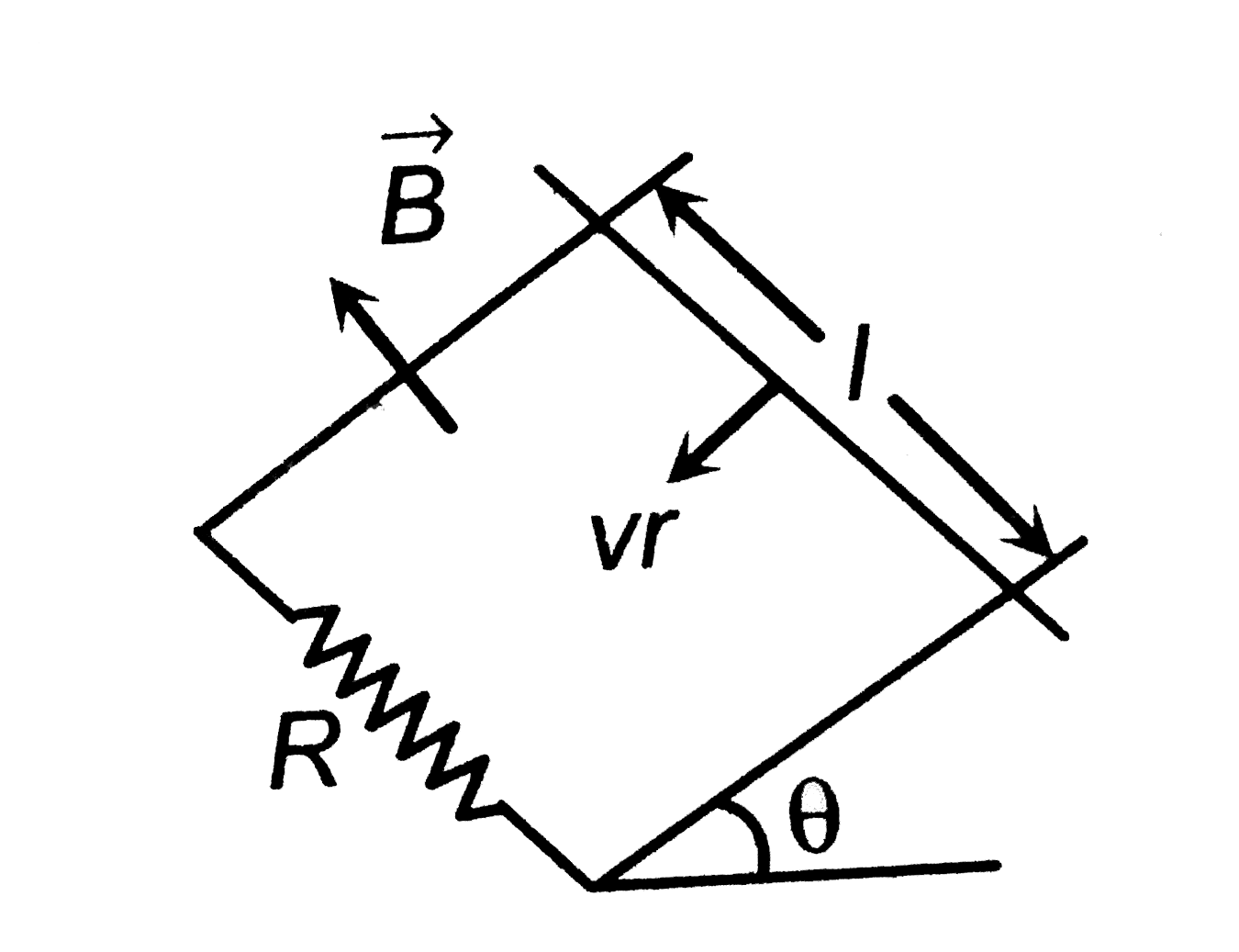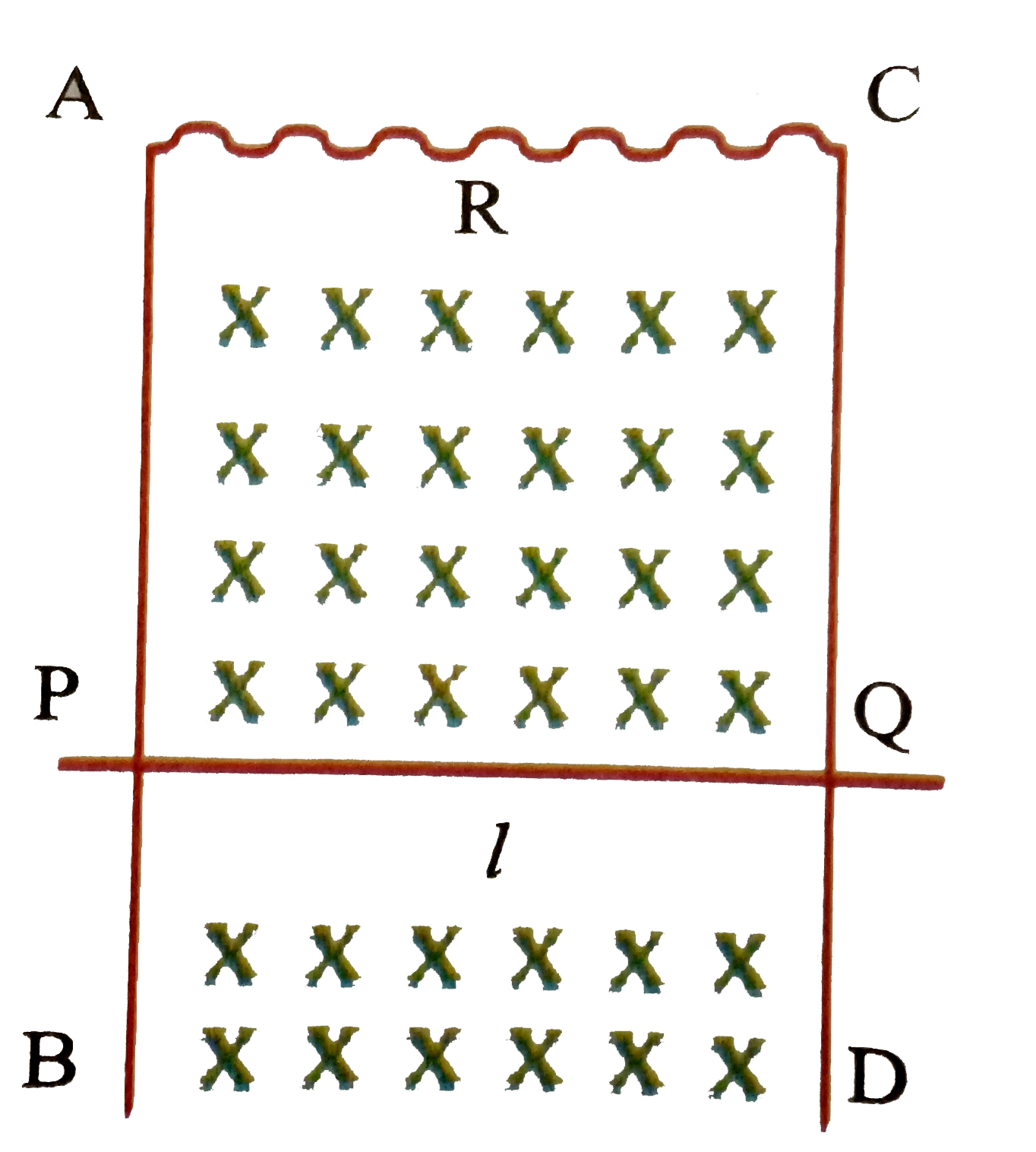A copper bar of mass m rest at right angles to two parallel horizontal l distance apart . The rails are connected by a resistor R at one end and kept open at the other ends . Ther is a uniform upward magnetic fields of induction B.The bar is pulled away from the closed end by a constant force F. Calculate the terminal velocity of the bar when μ is the coefficient of frction between the rails and the bar .
The correct Answer is:(F−μmg)RB2l2
Topper's Solved these Questions
- ELECTROMAGNETIC INDUCTIONBOOK - NN GHOSHCHAPTER - ELECTROMAGNETIC INDUCTIONEXERCISE - EXERICISES
12 Videos
- ELECTRIC FIELD AND POTENIALBOOK - NN GHOSHCHAPTER - ELECTRIC FIELD AND POTENIALEXERCISE - EXERCISE-B
35 Videos
- FUNDAMENTAL OF CURRENT ELECTRICITYBOOK - NN GHOSHCHAPTER - FUNDAMENTAL OF CURRENT ELECTRICITYEXERCISE - Exercises
45 Videos
Similar Questions
A copper bar of mass m sides under gravity on two smooth parallel rails l distance apart and set at angle α to the horizontal . At the lop , the rails are joined by a resistor R. Calculate the steady velocity of the bar the n when there is a unifrom magnetic field B perpedicular to the plane of the rails .
View SolutionA copper rod of mass m slides under gravity on two smooth parallel rails l distance apart set at an angle θ to the horizontal. At the bottom, the rails are joined by a resistance R.

There is a uniform magnetic field perpendicular to the plane of the rails. the terminal valocity of the rod is
View Solution
Knowledge Check
A bar magnet of moment ¯¯¯¯M is in a magnetic field of induction ¯¯¯B. Then the couple is
A¯¯¯¯Mׯ¯¯BB¯¯¯Bׯ¯¯¯MC¯¯¯¯M.¯¯¯BD¯¯¯B.¯¯¯¯MA copper rod of mass m slides under gravity on two smooth parallel rails l distance apart set at an angle θ to the horizontal. At the bottom, the rails are joined by a resistance R.

There is a uniform magnetic field perpendicular to the plane of the rails. the terminal valocity of the rod isAmgRtanθB2l2BmgRcotθB2l2CmgRsinθB2l2DmgRcosθB2l2A copper rod of mass m slides under gravity on two smooth parallel rails l distance apart set at an angle θ to the horizontal. At the bottom, the rails are joined by a resistance R.

There is a uniform magnetic field perpendicular to the plane of the rails. the terminal valocity of the rod isAmgRcosθB2l2BmgRsinθB2l2CmgRtanθB2l2DmgRcotθB2l2
Two smooth horizontal parallel conducting rails are connected with a capacitor and a resistor at the two ends as shown. A uniform conducting rod PQ of mass 'm' and length 'l' is dragged with a constant horizontal force 'F'. The terminal velocity aquired by the conducting rod is

View SolutionA conducting bar of length L is free to slide on two parallel conducting rails as shown in the figure

Two resistors R1andR2 are connected across the ends of the rails. There is a uniform magnetic field →B pointing into the page. An external agent pulls the bar to the left at a constant speed v.
The correct statement about the directions of induced currentsI1andl2 flowing through R1 and R2 respectively is:
View SolutionTwo thick rods AB,CD are placed parallel to each other at a distance l. their ends are joined to a resistance R. A magnetic field of induction B is applied perpendicular to the plane contaning the rods. If the rods are vertical, the terminal uniform velocity of the rod PQ of mass m is given by

View SolutionTwo smooth horizontal parallel conducting rails are connected with a capacitor and a resistor at the two ends as shown. A uniform conducting rod PQ of mass 'm' and length 'l' is dragged with a constant horizontal force 'F'. The terminal velocity aquired by the conducting rod is

View SolutionTwo parallel resistanceless rails are connected by an inductor or inductance L at one end as shown in figure. A magnetic field B exists in the space which is perpendicular to the plane of the rails. Now a conductor of length l and mass m is placed transverse on the rail and given an impulse J towards the rightward direction. Then select the corrent option(s).

View Solution
